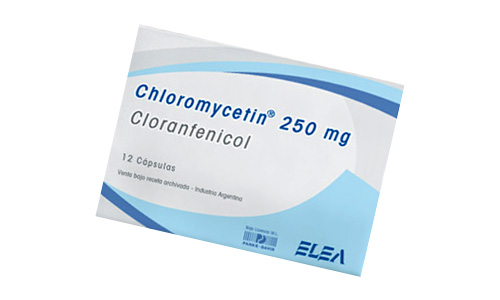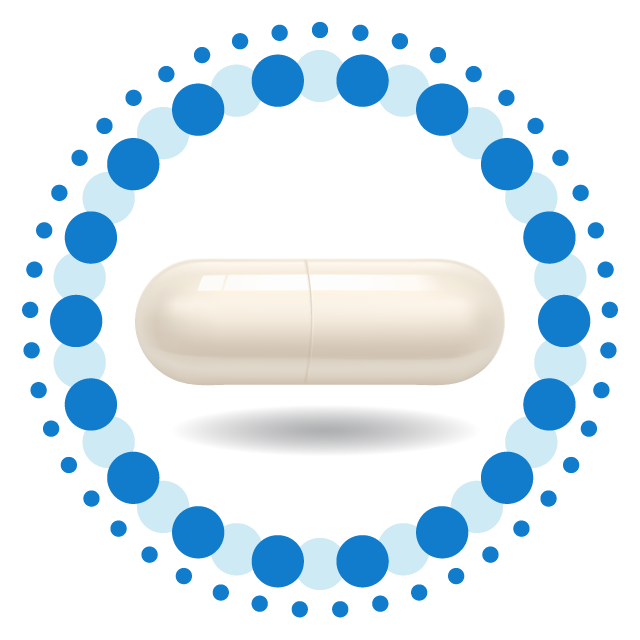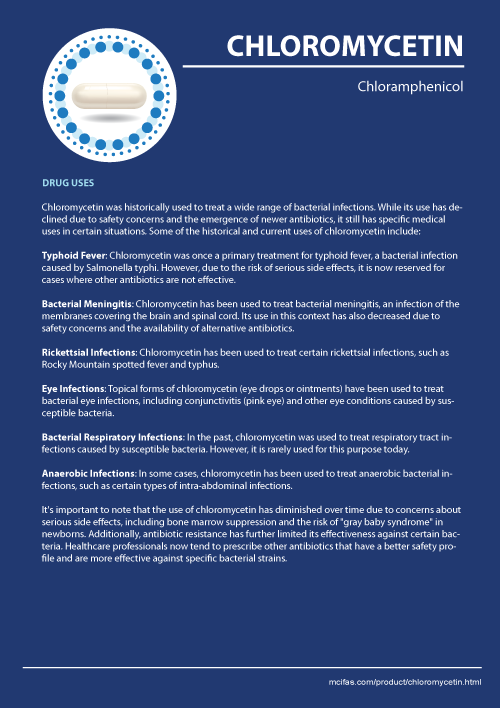Chloromycetin Prescribing Information
Chloromycetin is the trade name for the antibiotic drug chloramphenicol. It was one of the first broad-spectrum antibiotics used to treat a variety of bacterial infections. Chloramphenicol was discovered in 1947 and became a significant tool in the medical field for treating infections until newer antibiotics were developed.
Antibiotic works by inhibiting bacterial protein synthesis, which is essential for the growth and survival of bacteria. It binds to the bacterial ribosome, preventing the formation of peptide bonds and the assembly of new proteins. This action makes it effective against a wide range of bacteria, including both Gram-positive and Gram-negative species.

Uses of Chloromycetin
Chloromycetin was historically used to treat a wide range of bacterial infections. While its use has declined due to safety concerns and the emergence of newer antibiotics, it still has specific medical uses in certain situations. Some of the historical and current uses of chloromycetin include:
- Typhoid Fever: Chloromycetin was once a primary treatment for typhoid fever, a bacterial infection caused by Salmonella typhi. However, due to the risk of serious side effects, it is now reserved for cases where other antibiotics are not effective.
- Bacterial Meningitis: Medicine has been used to treat bacterial meningitis, an infection of the membranes covering the brain and spinal cord. Its use in this context has also decreased due to safety concerns and the availability of alternative antibiotics.
- Rickettsial Infections: Chloromycetin has been used to treat certain rickettsial infections, such as Rocky Mountain spotted fever and typhus.
- Eye Infections: Topical forms of chloromycetin (eye drops or ointments) have been used to treat bacterial eye infections, including conjunctivitis (pink eye) and other eye conditions caused by susceptible bacteria.
- Bacterial Respiratory Infections: In the past, chloromycetin was used to treat respiratory tract infections caused by susceptible bacteria. However, it is rarely used for this purpose today.
- Anaerobic Infections: In some cases, chloromycetin has been used to treat anaerobic bacterial infections, such as certain types of intra-abdominal infections.
It's important to note that the use of chloromycetin has diminished over time due to concerns about serious side effects, including bone marrow suppression and the risk of "gray baby syndrome" in newborns. Additionally, antibiotic resistance has further limited its effectiveness against certain bacteria. Healthcare professionals now tend to prescribe other antibiotics that have a better safety profile and are more effective against specific bacterial strains.
Dosage
The dosage of Chloromycetin can vary depending on the specific infection being treated, the patient's age, weight, and overall health, as well as any other medications they might be taking. It's important to follow the dosing instructions provided by a healthcare professional or the prescribing information on the medication label. Below are general dosage guidelines for different forms of chloramphenicol:
Oral Chloramphenicol Capsules:
- Adults and Children: The usual adult dose is 50 mg/kg/day divided into 4 equal doses. This means that the total daily dose is divided into four smaller doses taken throughout the day. The total daily dose can also be given as a single dose at bedtime.
- The total daily dose should not exceed 4 grams.
Topical Chloramphenicol (Eye Drops or Ointment):
- Follow the instructions provided on the packaging.
- Typically, for eye infections, one to two drops of the solution or a small amount of ointment may be applied to the affected eye(s) several times a day.
Intravenous (IV) Chloramphenicol:
- Intravenous chloramphenicol is generally reserved for severe infections or cases where oral administration is not feasible.
- Dosage will vary based on the specific infection, but typical dosages might range from 25 mg/kg to 50 mg/kg every 6 to 8 hours.
Side Effects of Chloromycetin
Chloromycetin can potentially cause a range of side effects, some of which can be serious. The likelihood and severity of these side effects can vary from person to person. If you are prescribed chloromycetin, it's important to be aware of the possible side effects. Here are some of the potential side effects of chloromycetin:
- Bone Marrow Suppression: Chloromycetin can suppress the bone marrow's ability to produce blood cells, leading to anemia (low red blood cell count), leukopenia (low white blood cell count), and thrombocytopenia (low platelet count). This can result in fatigue, increased susceptibility to infections, and bleeding tendencies.
- Gray Baby Syndrome: This is a potentially life-threatening condition that can occur in newborns and young infants when chloramphenicol accumulates to toxic levels due to an immature liver. Symptoms can include gray or blue skin color, vomiting, low body temperature, and difficulty breathing.
- Allergic Reactions: Allergic reactions to chloramphenicol are rare but can occur. Symptoms may include rash, itching, swelling, severe dizziness, and difficulty breathing.
- Gastrointestinal Distress: Common gastrointestinal side effects may include nausea, vomiting, diarrhea, and abdominal pain.
- Neurological Symptoms: High doses or prolonged use of chloramphenicol can lead to neurological symptoms, including confusion, delirium, and headache.
- Peripheral Neuropathy: Prolonged use of chloramphenicol has been associated with peripheral neuropathy, a condition that causes tingling, numbness, and pain in the extremities.
- Optic Neuropathy: In rare cases, chloramphenicol has been linked to optic neuropathy, a condition affecting the optic nerve that can lead to vision problems.
- Hypersensitivity: Some individuals may experience hypersensitivity reactions such as fever, rash, and eosinophilia (increased eosinophil count in the blood).
- Liver Dysfunction: Chloramphenicol can affect liver function in some individuals, leading to elevated liver enzymes.
- Superinfections: Like many antibiotics, chloramphenicol can disrupt the normal balance of microorganisms in the body, potentially leading to the overgrowth of resistant bacteria or fungal infections.
These are not exhaustive lists of side effects, and individual responses to medications can vary. If you experience any unusual or severe side effects while taking chloramphenicol, it's crucial to seek medical attention immediately.
Interaction with other drugs
Chloromycetin can interact with other drugs, potentially affecting their effectiveness or increasing the risk of side effects. Below are some notable interactions:
- Warfarin (Coumadin): Medicine can interfere with the metabolism of warfarin, a blood thinner. This interaction can increase the risk of bleeding. Regular monitoring of blood clotting times is essential if you're taking both medications.
- Phenytoin (Dilantin): Chloramphenicol can increase the levels of phenytoin in the blood, potentially leading to phenytoin toxicity. This can result in symptoms like confusion, slurred speech, and uncontrolled eye movements.
- Sulfonylurea Oral Hypoglycemic Agents: Chloramphenicol may enhance the effects of sulfonylurea drugs used to treat diabetes, leading to a risk of low blood sugar (hypoglycemia).
- Cyclosporine: The combination of chloramphenicol and cyclosporine, an immunosuppressant, can result in increased levels of cyclosporine in the blood. This can potentially lead to toxic effects.
- Rifampin: Rifampin can increase the breakdown of chloramphenicol in the body, reducing its effectiveness. Combining these drugs might require dosage adjustments.
- Phenobarbital: Phenobarbital can increase the metabolism of chloramphenicol, potentially reducing its effectiveness.
- Oral Contraceptives: Chloramphenicol can interfere with the metabolism of certain oral contraceptives, potentially reducing their effectiveness. This might increase the risk of unintended pregnancies.
- Other Antibiotics: Combining chloramphenicol with certain antibiotics, especially those that also affect bone marrow function, can increase the risk of bone marrow suppression and other side effects.
- Anticoagulants and Antiplatelet Drugs: There's a potential for increased bleeding risk when chloramphenicol is used in combination with other anticoagulants or antiplatelet medications.
What to avoid while on Chloromycetin
While taking Chloromycetin, there are certain precautions and activities you should consider to ensure your safety and the effectiveness of the medication. Here are some things to avoid while on this drug:
- Alcohol: Avoid consuming alcohol while taking Chloromycetin. Alcohol can potentially interact with the medication and exacerbate certain side effects.
- Other Medications and Supplements: Some substances can interact with Chloromycetin and affect its effectiveness or increase the risk of side effects.
- Driving and Operating Machinery: Antibiotic can cause dizziness, confusion, and other neurological symptoms in some individuals. If you experience these effects, avoid activities that require alertness, such as driving or operating heavy machinery.
- Sun Exposure: Some individuals may experience increased sensitivity to sunlight (photosensitivity) while taking Chloromycetin. Protect your skin from excessive sun exposure by using sunscreen, wearing protective clothing, and avoiding prolonged sun exposure.
- Grapefruit Juice: Grapefruit and its juice can interfere with the metabolism of certain medications, potentially affecting their effectiveness. While there's no specific information about grapefruit interactions with Chloromycetin, it's generally a good idea to limit grapefruit consumption while on medication.
- Certain Foods: Some foods might interact with Chloromycetin or affect its absorption. While there are no well-documented dietary restrictions, it's advisable to maintain a balanced diet and follow your doctor's instructions.
- Expired Medication: Avoid taking Chloromycetin if it has expired. Expired medications might not be effective and could potentially be harmful.
- Overuse of Antibiotics: Overusing antibiotics can lead to antibiotic resistance, making infections more difficult to treat in the future.
- Stopping Treatment Prematurely: Complete the full course of treatment even if you start feeling better before the medication is finished. Stopping treatment prematurely can lead to incomplete eradication of the infection and potential recurrence.
- Self-Medication: Avoid self-medicating with Chloromycetin or any other prescription medication. Always consult a healthcare provider before starting or stopping any medication.
Contraindications of Chloromycetin
Contraindications are specific situations or conditions in which a medication like Chloromycetin should not be used due to the potential for serious harm or adverse effects. Here are some contraindications:
- Hypersensitivity to Chloramphenicol: If you have a known allergy or hypersensitivity to chloramphenicol or any of its components, you should not use this medication.
- Bone Marrow Suppression: Remedy can suppress bone marrow function, leading to decreased production of blood cells (anemia, leukopenia, thrombocytopenia). If you have a history of bone marrow suppression or blood disorders, the use of chloramphenicol should be avoided.
- History of Blood Disorders: If you have a history of aplastic anemia or any other blood disorders, the use of chloramphenicol is generally contraindicated due to the potential to worsen these conditions.
- History of Liver Disease: If you have a history of liver disease or impaired liver function, the use of chloramphenicol should be approached with caution, as the drug can affect liver metabolism.
- Pregnancy and Breastfeeding: Chloramphenicol can cross the placental barrier and be excreted in breast milk. It is generally contraindicated during pregnancy, especially during the first trimester, and while breastfeeding.
- Neonates and Premature Infants: The use of chloramphenicol in neonates and premature infants is contraindicated due to the risk of gray baby syndrome, a potentially life-threatening condition.
- G6PD Deficiency: People with glucose-6-phosphate dehydrogenase (G6PD) deficiency are at an increased risk of developing hemolytic anemia when exposed to certain medications, including chloramphenicol. This is a contraindication for its use in individuals with G6PD deficiency.
- Certain Infections: While Chloromycetin can treat various infections, it's not appropriate for all types. For instance, it's not generally recommended for minor infections that can be treated with safer alternatives.
- Myelosuppressive Therapy: If you are currently undergoing myelosuppressive therapy (treatments that suppress bone marrow function), the use of chloramphenicol should be avoided due to the risk of exacerbating bone marrow suppression.
- Immunosuppression: In individuals with compromised immune systems, the use of chloramphenicol can increase the risk of severe infections due to the drug's potential to suppress immune function.
Pregnancy and Chloromycetin
Chloromycetin use during pregnancy is generally discouraged, especially during the first trimester, due to potential risks to both the mother and the developing fetus. The safety of chloramphenicol use during pregnancy has been a topic of concern because of its association with a condition called gray baby syndrome in newborns and its potential impact on the developing fetus.
Gray baby syndrome is a rare but serious condition characterized by symptoms such as gray or bluish skin color, hypotension (low blood pressure), hypothermia (low body temperature), vomiting, and cardiovascular collapse. This condition occurs due to the immature liver function in newborns, leading to the accumulation of high levels of chloramphenicol in their bodies.
Other concerns with chloramphenicol use during pregnancy include the potential for bone marrow suppression, which could affect both the mother and the developing fetus.
» Drug Uses (format pdf, 0.2 Mb)



